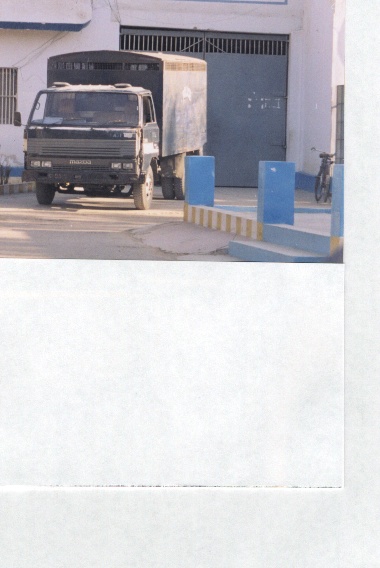There are many documented implications of these laws, particularlu as they regard zina. The onus of providing proof of rape rests with the victim under the ordinance and there are severe ramifications if she does not provide proof. If she is unable to convince the court, her allegation of rape is in itself considered as confession of zina and the victim effectively implicates herself and is liable to Tazir punishment. This is the truck that escorts the women from jail to court 
Two 1983 cases drew national and international attention, not because they are the only ones of their kind, but because they provided examples, early on in the law's history, of the disastrous ramifications of Hadood legislation. Safia Bibi, an eighteen-year-old blind girl, was raped by her landlord and his son and became pregnant as a result of those rapes. She was unable to prove her allegation of rape and was charged with fornication, found guilty, and sentenced to three years' rigorous imprisonment, fifteen lashes and a fine of one thousand rupees. While her pregnancy was cited to prove that she had engaged in extramarital sex, her assailants were acquitted due to "want of evidence." After national and international protest, the Federal Shariat Court acquitted Safia of fornication on appeal.
Similarly, a thirteen-year-old orphaned girl, Jehan Mina, was raped by her uncle and his son and became pregnant. Unable to convince the court that rape had occurred, she was instead given the Tazir punishment of one hundred lashes plus three years rigorous imprisonment for zina. The fact that she was pregnant was considered proof by the court that sex outside marriage had taken place (HRW, 1992; Sumar & Nadhvi, 1988). Notwithstanding the stigma a raped victim faces when she admits to being assaulted, these examples suggest that should a raped woman be inclined to consider charging her attacker she might think again. Often rape victims are forced to acknowledge rape only when visible consequences result from it-that is, when they become pregnant and can no longer hide their pregnancy
|
 |
 |
 |  |  |
 | |  |
 |  |  |
 |
|  |
 |  |  |
 | A 1987 case provides an example of male use of zina laws to subjugate wives. Twenty four year old Roshen Jehan filed for divorce against her husband on the frounds of severe physical mistreatment,and moved into her ndighbour's house. Her husband lodged a FIR (First Information Report) alleging that she was committing adultery (zina) with the married neighbour. On the basis of this FIR, Roshan Jehan was arrested and incarcerated.
Shahdia Sarwar's first husband had divorced her and the papers had been signed in front of a magistrate. The huband, however, had not registered the divorce documents in the local council as required by law, rendering the divorce not legally binding.Unaware of this, Shahdia, after her mandatory 96 day period of waiting iddat, remarried. Shahdia had an affidavit attested to by a magistrate to confirm her status as an adult, free to marry whomever she wished.
Her first husband rebounding, from a failed attempt at a sceond marriage, decided that he wanted his first wife Shahida, back. Shahida's second marriage was ruled invaled. And because she misled her second husband into thinking that she was single and free to marry, Shahida was accused of "raping" her second husband. (Shahida because her previous marriage was valid and Sarwar because he was also already married, Shahida being his second wife). The sentence however was later commuted to life imprisonment.
|  |
 |  |  |
 |
 |
|
 |
|
